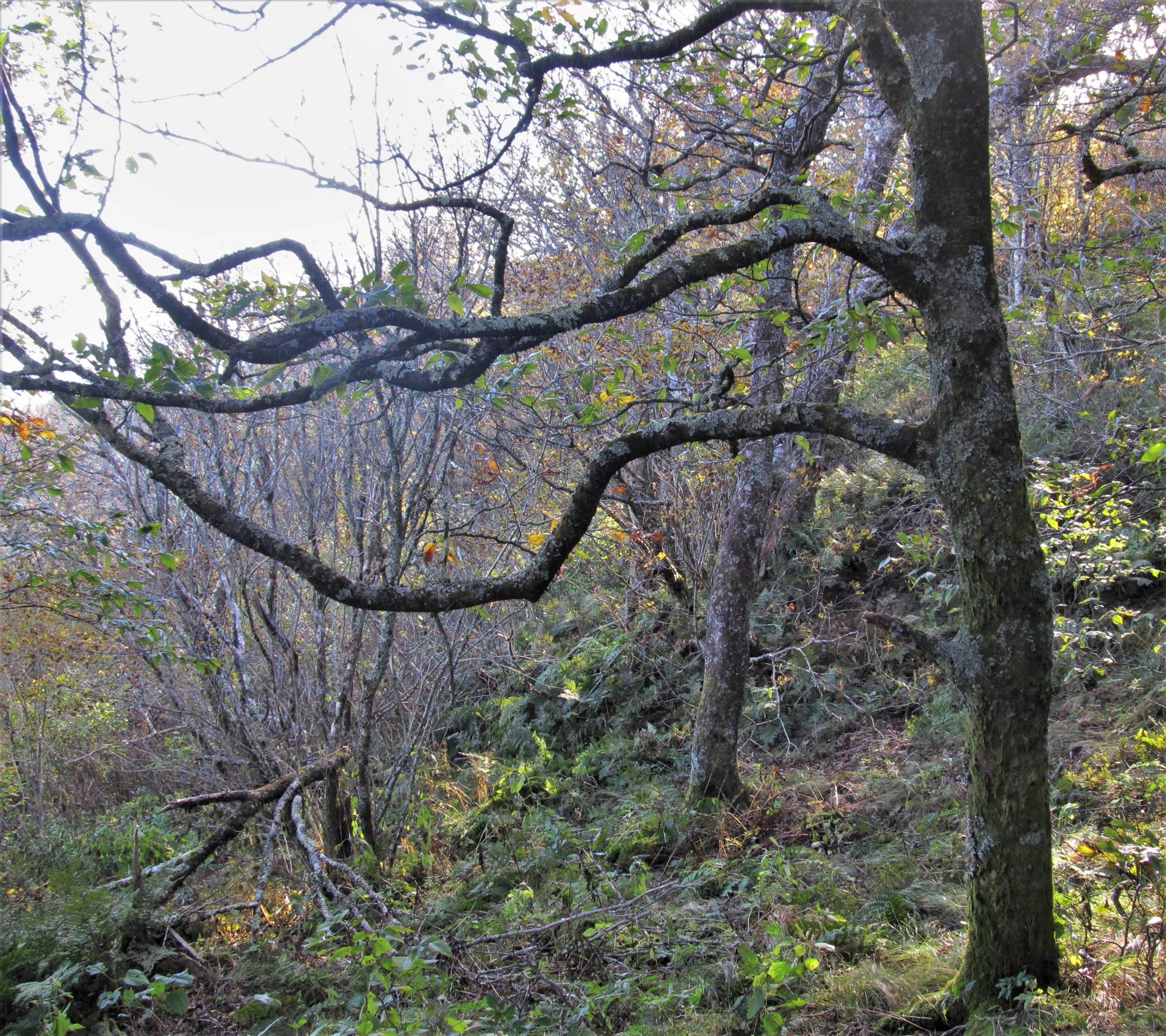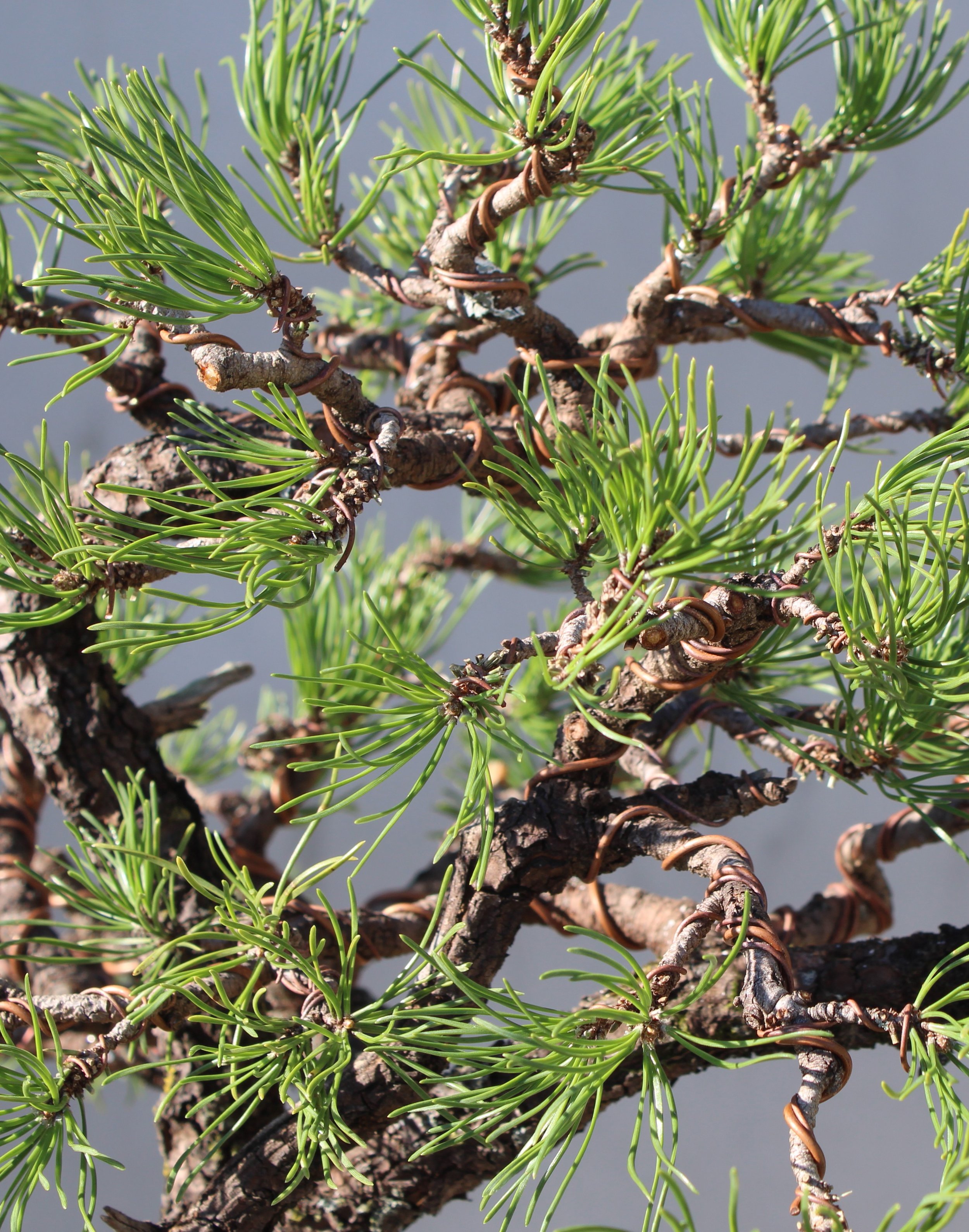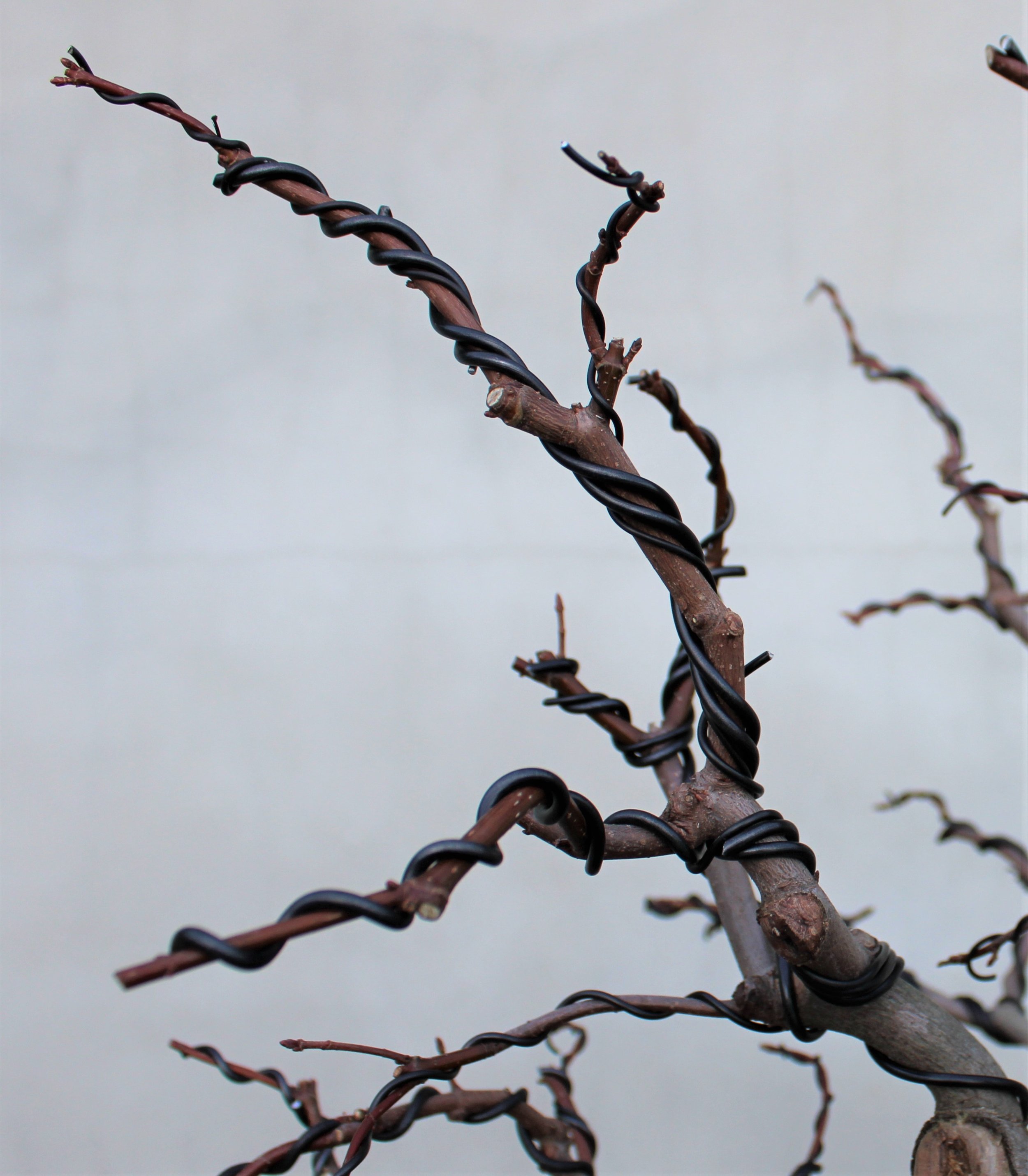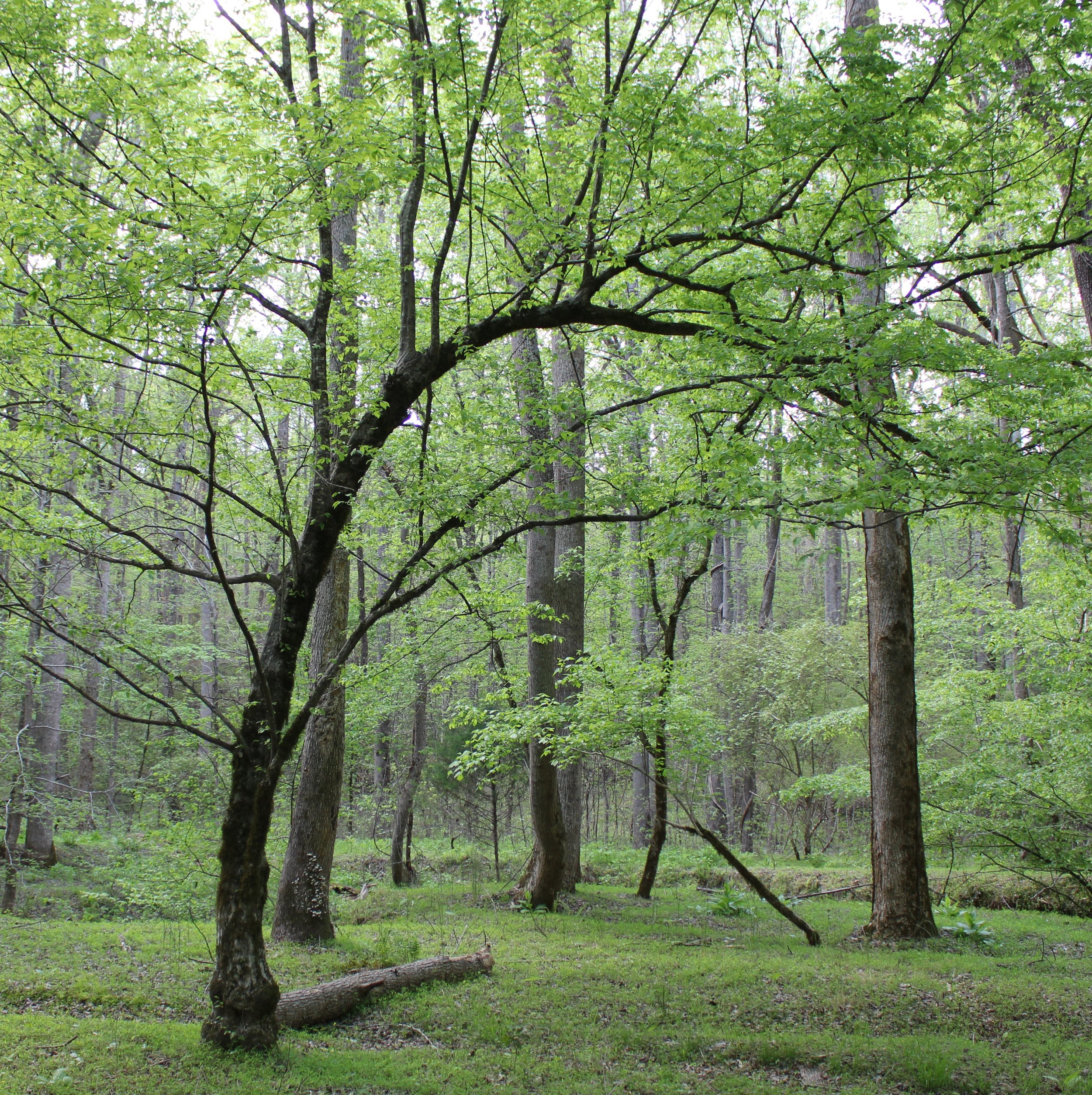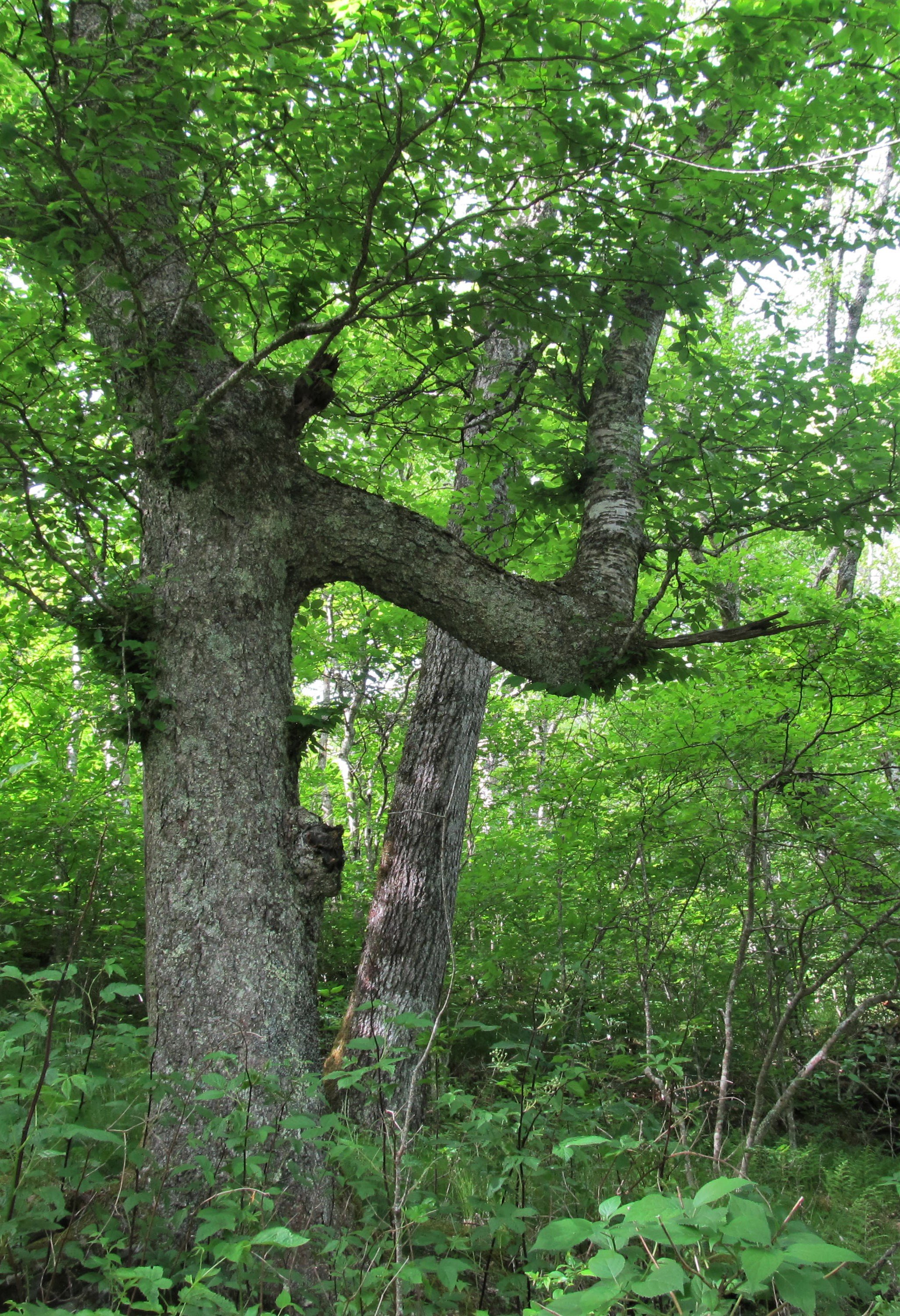As the Twig is Bent
Remember the adage, As the twig is bent so the tree is inclined? It's an old saying, originally penned by poet Alexander Pope in 1732, and in full goes this way: "'Tis education forms the common mind, Just as the twig is bent the tree's inclined." So in its original form the quote is a dictum pertaining to the effect of education on humans, using an analogy of how the shape of woody plants (trees and shrubs) is affected by their environment. This plant reference itself is based on observation of nature, and it is true. When part of a tree, be it trunk or branch, is young enough to still be flexible, it can be reshaped. It might be straight to begin with, but then some force causes it to bend. If kept in that position long enough it will assume that new shape, and continue to grow that way. Examples of this phenomenon are everywhere. The forces that might come into play on trees in nature include: wind, snow, ice, gravity, sunlight, and even other trees.
Woody plants shaped by wind at the coast.
Tree limbs shaped by phototropism and gravitropism.
Tree growing on a rock outcrop, recumbent posture probably caused by ice and snow load.
Caught in the act: A fallen tree grabbed the top of a neighbor on the way down and now holds it in a bent over position. For as many years as it takes for the dead tree to rot away or be otherwise removed, the still-living tree trapped under it will grow in that misshapen position.
In bonsai, the force that causes tree trunks and limbs to be reshaped are the hands of a human being, and often what holds the tree part in its new position is training wire. Bonsai training wire is made of either copper or aluminum. If copper, the wire is annealed beforehand, treated with heat in order to toughen it and increase its holding power. If aluminum, the wire is anodized, subjected to an electrochemical process for aesthetic reasons, changing the color of the metal to a more appealing tone. Training wire comes in different gauges, or diameters, with wire of heavier gauge having greater strength. It is desirable to use only as heavy a gauge wire as required to effectively hold the tree part in the new position, as heavier wire is more noticeable and damage to the plant can accidentally occur from the greater force needed to manipulate it. Annealed copper wire has greater holding strength than a similar gauge aluminum wire. For that reason many bonsai growers prefer using copper, but aluminum is generally easier to use and can be more gentle on the bark of the tree.
Copper wire on a pine.
Aluminum wire on a maple.
Be it copper or aluminum, the wire is handled the same way. The person using it will wrap it in a coiling fashion around a pliable limb or trunk. The part of the tree wrapped by the wire is then shaped to satisfy the person’s desire by bending and twisting, with care being taken so as not to break it. Once the new shape has been implemented the training wire holds it in place. The wire is left on the tree as long as possible, but needs to be removed before it begins constricting growth. Bonsai grow slowly, but they do grow. Wire does not.
Chalk-bark maple (Acer leucoderme) before pruning and wiring.
Chalk-bark maple after pruning and wiring.
Juniper (Juniperus cv.) before pruning and wiring.
Juniper after pruning and wiring.
Wire left on too long can embed itself in the growing limb. When the wire is removed, unsightly scars remain. Left in place long enough the constricting wire can kill the branch it is wrapped around.
The reason shaping bonsai with training wire works can be found in biology, specifically in the way trees and other woody plants go about the business of creating structure. Initially woody plant stems are not woody. The young tissue that makes up the stem is soft and pliable, but over time as the plant grows, through a complex process known as lignification, the stem becomes rigid and woody. Whatever shape the stem is in as lignification occurs, that shape is retained, solidified as wood. A tree seedling starts with a single stem. Over time that stem grows and swells and lignifies and becomes what we call a trunk. From that first stem emerges other stems, which over time following the same process become the tree's branches. If the stems that eventually become the trunk and branches remain straight as lignification occurs, with no force causing them to bend or break, then they will be straight in their woody character. If they are bent or curved somehow as lignification occurs, with some force exerting great pressure on them without breaking them completely, then the trunk and branches will have a curving or angular woody nature.
Along the way in my bonsai education, I've heard numerous times from multiple sources that when people shape wired bonsai limbs the bending and twisting causes microfractures in the plant tissue, which the tree then "repairs," causing the new shaping of the limbs to set. This idea might be thought of as a passalong belief, because it's the sort of information relatively few people have the technical wherewithal to verify. The idea gets passed around though, by people repeating it to others on the conviction that it sounds right. In this case it might actually be right, although one aspect of it is certainly wrong. Woody plants do not "repair" damage. They isolate damage by means of a chemical response and then cover it by means of a physical response. The damage remains, but it is safely contained in wood. When bonsai growers twist and bend woody plant parts they are likely provoking the plant to produce what is termed tension wood. The plant is not repairing the part under stress, but strengthening it so it can remain stable. The end result is a solidifying of the affected part that locks-in the shape imposed upon it by the stress.
Which brings us back to, "as the twig is bent, so the tree's inclined." Referring to a natural phenomenon displayed by woody plants, this statement is correct and important, as well as foundational to the whole process of shaping bonsai by use of wiring. Whether it makes a good analogy for the education of human beings depends on how broadly you define the term education.
A highly educated limb on an old sweetgum tree.


